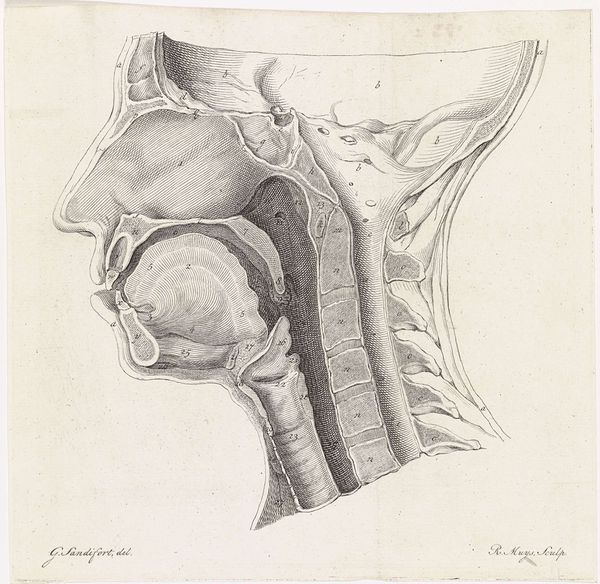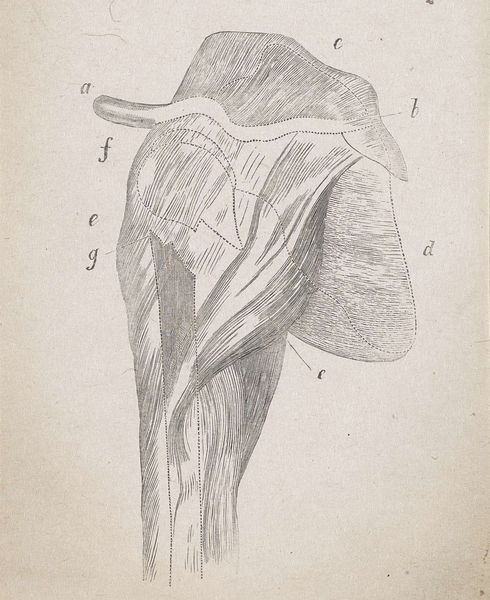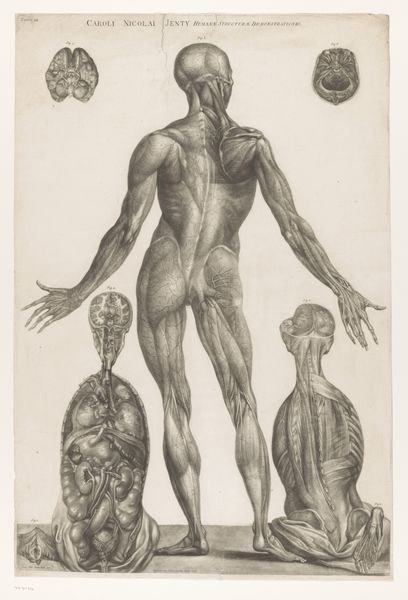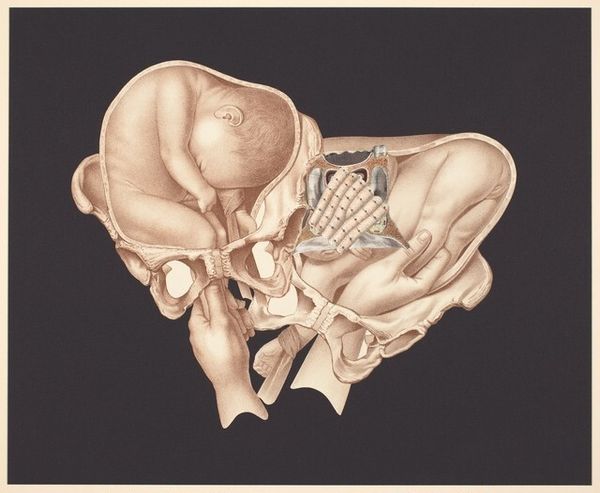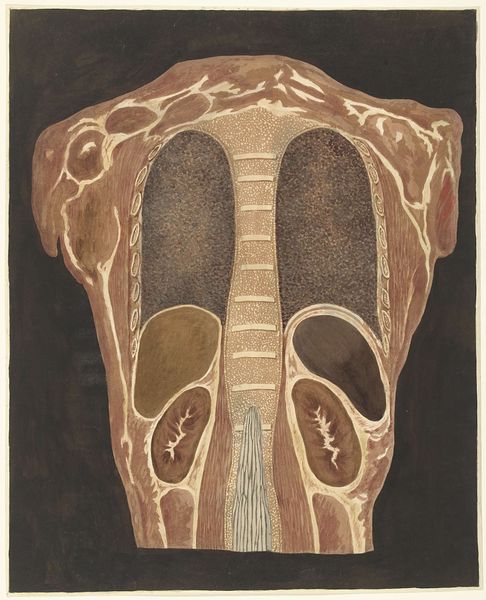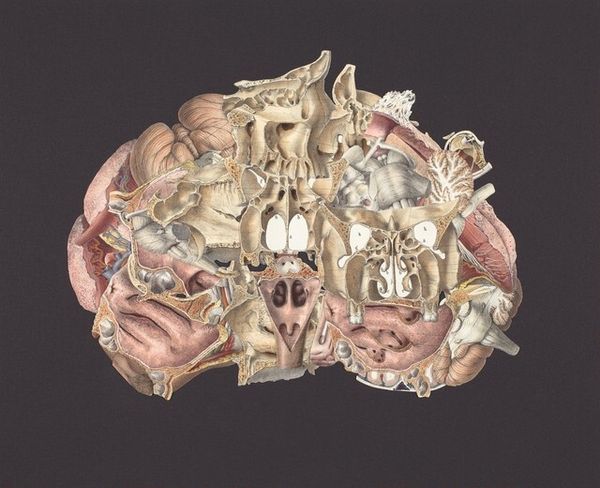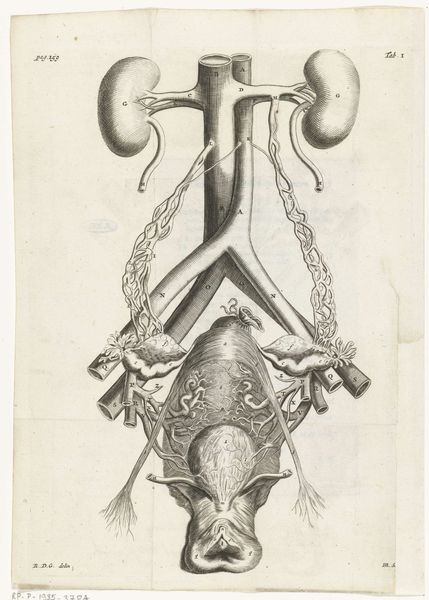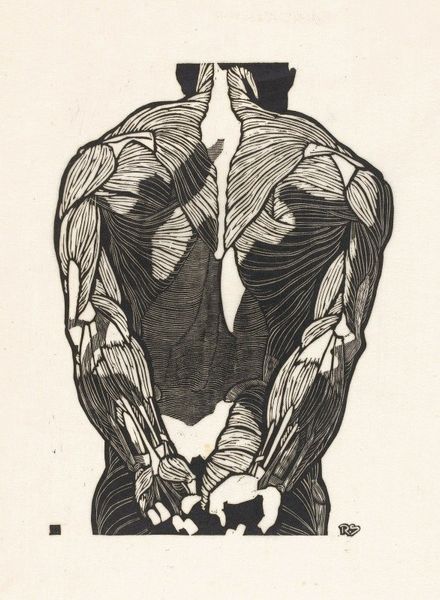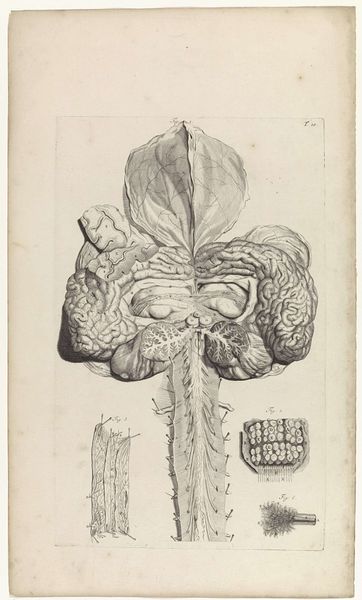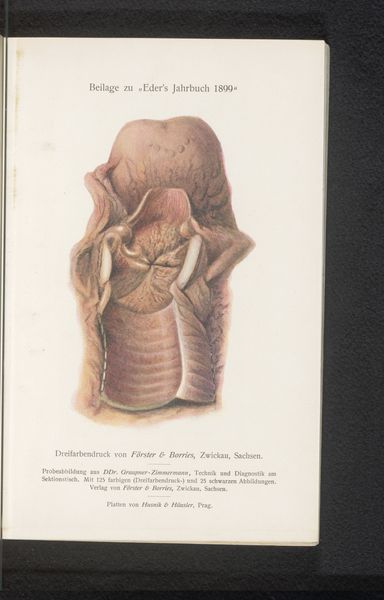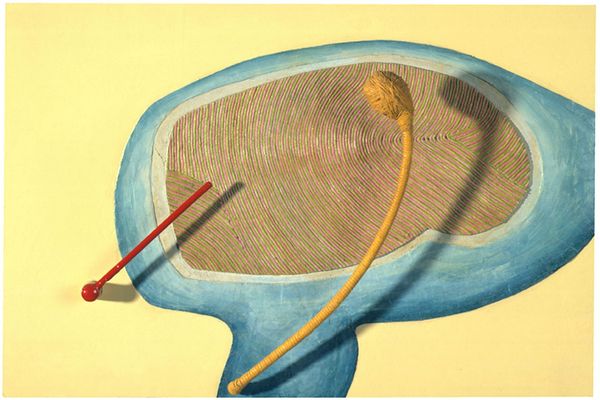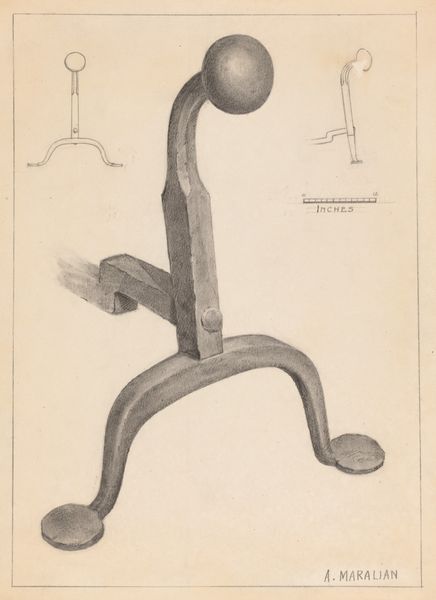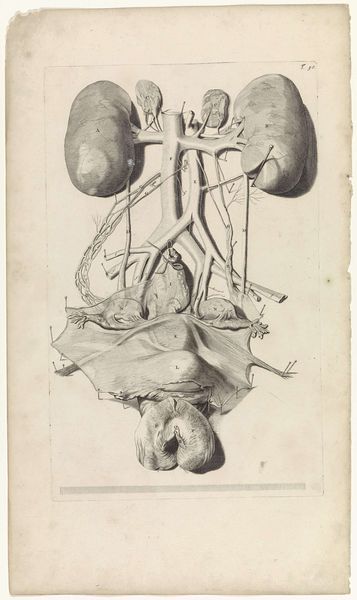
A System of Anatomical Plates of the Human Body, vol. 2 1822 - 1826
0:00
0:00
drawing, print, engraving
#
portrait
#
drawing
# print
#
figuration
#
history-painting
#
academic-art
#
engraving
Dimensions: 17 1/2 × 11 1/8 × 1 9/16 in. (44.5 × 28.2 × 4 cm)
Copyright: Public Domain
Editor: We’re looking at Plate II from John Lizars’ “A System of Anatomical Plates of the Human Body, vol. 2,” dating from 1822 to 1826. It's a print combining drawing and engraving. I'm immediately struck by how clinical yet intricate the rendering of the muscles, veins, and nerves are. What details of the composition stand out to you? Curator: The graphic articulation of depth is of prime interest. Note how Lizars employs line weight and density to create a stark contrast between the surface anatomy and the underlying structures. The strategic use of hatching and cross-hatching not only models form but also lends a remarkable texture to the skin and muscle. Does the selective coloring guide your eye through this complex topography? Editor: Yes, the touches of red and blue draw attention to specific arteries and veins. It’s fascinating how those pops of color coexist with the otherwise monochrome palette. But why not simply render this as black and white, and rely solely on line and shading? Curator: Exactly. Consider the interplay between the linear precision of the engraving and the subtle gradations achieved through drawing techniques. The composition balances scientific accuracy with aesthetic refinement, elevating it beyond mere medical illustration. The colored inks emphasizes this dialogue by suggesting an internal, diagrammatic logic imposed onto external reality. Editor: I see it now, a semiotic code almost. The strategic splashes of color serve as markers to guide the viewer's interpretation. I initially perceived it as cold, but the work really is dynamically balanced and beautiful. Curator: Precisely! It exemplifies how meticulous observation and technical skill can yield works that function as both anatomical documents and aesthetic objects. I wonder if Lizars had further intent.
Comments
No comments
Be the first to comment and join the conversation on the ultimate creative platform.
